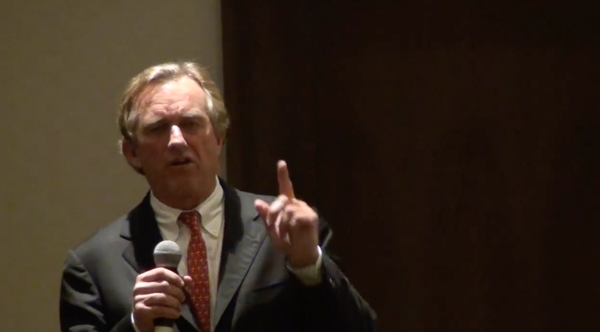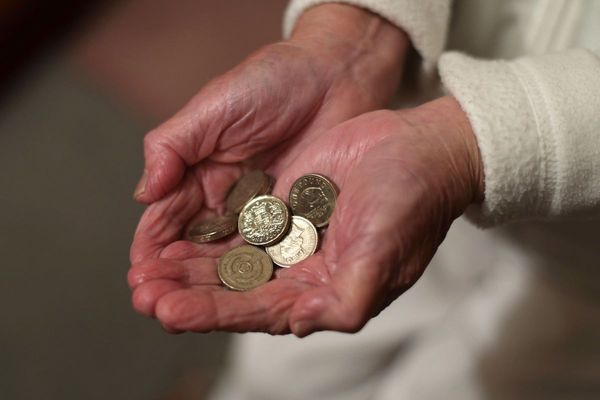
While her name is an awful mouthful, Barbara Leigh Smith Bodichon remains something of a Zelig figure. Pick up almost any book about Victorian literary circles and she’ll be in it somewhere. You see her here, you see her there, this much-admired artist and co-founder of Girton College, Cambridge, this cousin of Florence Nightingale and friend of George Eliot. In as much as she sticks in the mind when your attention is really supposed to be elsewhere, she is a pleasing, bustling kind of figure: independent, cheery, rather bohemian for her time – and sharp, too. “Today came a letter from Barbara full of joy in my success, in the certainty that Adam Bede was mine, though she had not read more than extracts in Reviews,” wrote Eliot in her diary on 6 May 1859. Everyone else had assumed her novel was by a man, but Bodichon had recognised her dearest correspondent’s “great big head & heart & her wise wide views” in an instant.
In Trailblazer, her new biography of Bodichon, Jane Robinson (Bluestockings, Ladies Can’t Climb Ladders) seeks to remedy her sidelining by putting her centre stage at last (though there have been other biographies); her theory is that her relative obscurity is the result only of her having blazed so many different trails. But while history is undoubtedly sniffy when it comes to all-rounders, especially those who are female, even Robinson seems to know that it is Bodichon’s friends and acquaintances who will be the draw for the contemporary reader. Her book begins, after all, with a sketch of a sunflower. At its heart, she has written Bodichon’s name; radiating outwards from its petals she has then drawn lines connecting her to everyone from Queen Victoria to Lord Tennyson and Emmeline Pankhurst.
And then there’s her subject’s private life. In the end, there’s no getting away from the fact that Bodichon’s peculiar part-time marriage – her husband, a French doctor, lived mostly in the couple’s second (or third) home in Algiers, where he liked to dress as an Arab – is far more fascinating on the page than her role in the establishment of the English Woman’s Journal (a periodical that promoted female equality) or the early days of Cambridge University’s first college for women in Hitchin. (Bodichon encouraged gymnastics for those students who were bored by its rural isolation, but “not everyone could cope with the trapeze”.)
Bodichon was born in 1827, the illegitimate child of a Norfolk parliamentarian and a Derbyshire miller’s daughter, who died of TB 18 months after the birth of the couple’s fifth baby together. Her childhood, though, was neither clandestine nor deprived. If she later worried about the taboo surrounding the fact that her parents, for obscure reasons, had not married, her independent spirit was born of an upbringing that was unusually free; the six-strong family travelled proudly in a specially commissioned, luxury horse-drawn omnibus, a charabanc that came with horsehair sofas and silver door handles. Her education was encouraged. When she turned 21, her wealthy father settled on her a portfolio of investments that meant she would forever be financially independent. Freedom meant, among other things, studying drawing at Bedford College, London; later, even as she worked in the causes of suffrage and education for women, she remained a watercolourist whose paintings were exhibited at the Royal Academy (her friends included Dante Gabriel Rossetti, to whom she loaned her much-loved Sussex house).
Her first romantic relationship was with John Chapman, the publisher and leading quack who’s best known now for his fling with Eliot. His letters to Bodichon, in which he seeks to persuade her to have sex with him on health grounds (his and hers), are some of the weirdest I’ve ever read, even by Victorian standards. I relished both the part of the book in which they appear, and the section in which, not too long afterwards, Barbara travels to Algiers where she meets Eugène Bodichon, the man she promptly decides to marry; theirs seems to have been quite a carnal relationship, until his eccentricity became too much and she left him to moulder in the heat. But I also have to admit to disliking Robinson’s tone in Trailblazer, to my ears horribly twee. “One can imagine Barbara peeping from behind a distant tree at the time, like a delighted fairy godmother,” she writes of Rossetti’s proposal to Lizzie Siddal, which took place on Bodichon’s property (give us the facts, not your excited imaginings).

Tone is also a problem in A Dirty, Filthy Book, Michael Meyer’s account of the 1877 prosecution of another feminist free-thinker, Annie Besant, together with her friend, the activist and liberal politician Charles Bradlaugh, for the publication of Charles Knowlton’s The Fruits of Philosophy – a manual that dared to explain some of the basic tenets of contraception to a British public then still largely in ignorance of such facts. Meyer, an American, is anxious that his readers grasp both Besant’s bravery (the publicity surrounding the trial would lead this estranged wife of a clergyman to lose custody of her daughter, Mabel) and the resonance of her story at a time when abortion rights are once again under threat, and in this cause is moved to describe his heroine as “a badass”, and to insist that her trial “was to birth control writing what the [Sex] Pistols’ Lesser Free Trade Hall show was to the formation of new bands”. However much he tells us (quite a lot) about Dickensian London, some part of him is unwilling to believe that the Victorians were really so very different to ourselves (I think they were), and this takes him to some strange places. “Reader, she fell for his robes,” he writes, in an effort to explain Besant’s (unaccountable, to him) decision to marry her husband.
The trial of Besant and Bradlaugh, aptly overseen by the womanising lord chief justice Alexander Cockburn, forms the heart of Meyer’s book, and his description of it is vivid, if rather verbose. I’m not sure his account contains much that is new and its focus inevitably involves a sense of anticlimax: he has no real interest in the remaining 56 years of Besant’s life, during which she inconveniently became a theosophist and went to live in India, and thanks to this, you come to wonder what the hullabaloo of the trial really meant: to her, or to anyone (cut to 1960, when the Chatterley trial really did change things). But then again, reading Ye Olde Sex Manuals is surprisingly entertaining. Grateful as I am that I didn’t have to spend my youth faffing with sponges and white oak bark, when I pictured mutton-chopped men in long nightshirts eagerly swallowing heaped teaspoonfuls of cayenne pepper to perk themselves up, I couldn’t help but laugh.
• Trailblazer: The First Feminist to Change Our World by Jane Robinson is published by Doubleday (£25). To support the Guardian and Observer order your copy at guardianbookshop.com. Delivery charges may apply
• A Dirty, Filthy Book: Sex, Scandal, and One Woman’s Fight in the Victorian Trial of the Century by Michael Meyer is published by Ebury (£25). To support the Guardian and Observer order your copy at guardianbookshop.com. Delivery charges may apply







